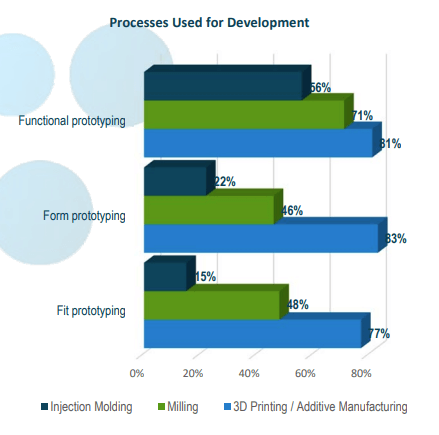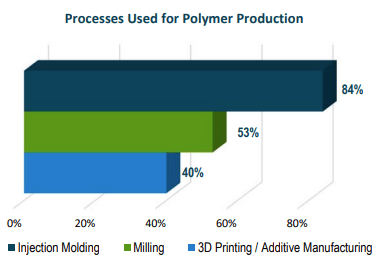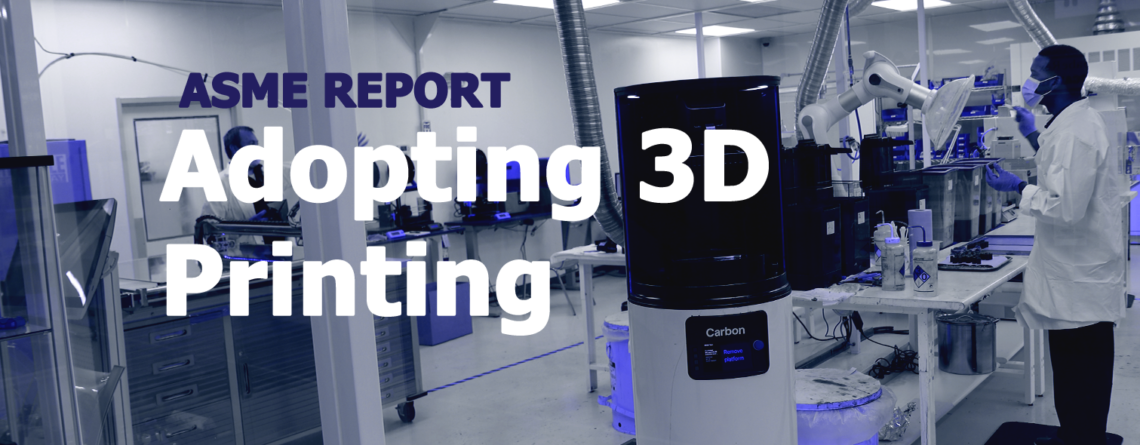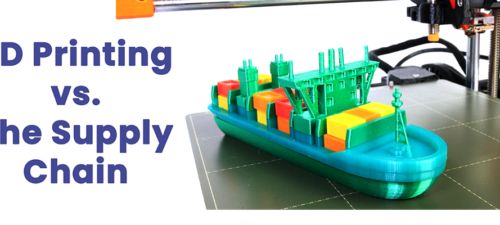ASME released a report on 3D printing adoption. Here’s what to know.
Trevor Hendricks2025-02-27T15:09:23+00:00The American Society of Mechanical Engineers (ASME) recently unveiled the results of their study involving nearly 400 working engineers that polled how they incorporate additive manufacturing in their work. While we highly recommend you review their findings in full, we’ve unpacked some of the insights that we find most meaningful and how SabeRex plays into these trends.
3D printing dominates prototyping, and also has a foothold in production
Additive manufacturing, formerly known as “rapid prototyping” according to the report, has long been regarded as the premier technology for manufacturing prototypes. The report helpfully broke down the prototype category into “fit, form, and function” subcategories with 3D printing leading all of them.
The responses regarding actual production are more mixed, but still encouraging for 3D printing advocates. According to the study, 40% of respondents involved in product development said they use additive manufacturing for polymer part production. Industries at the forefront of this growth are in the life sciences and industrial design, specifically dental, medical, aerospace, and fitness equipment.
At SabeRex, we’ve personally witnessed the growth that this technology has unlocked for a number of industries, from aerospace to water filtration.


Adoption of additive manufacturing is being led by companies that skew younger, newer, and smaller
The ASME report provides insights into the demographics and company make-up behind the adoption of 3D printing. Perhaps unsurprisingly, new entrants to the engineering talent pool come with an increased understanding and comfortability with 3D printing. Results say 57% of respondents under 45 are likely to use 3D printing for production as opposed to 37% for engineers 45 and older.
From the report, it also seems that smaller companies are disrupting the manufacturing trades, with 61% of companies with less than 100 employees being more likely to use 3D printing for production versus 45% of larger companies responding the same.
SabeRex stands on both sides of this divide by providing solutions that allow smaller companies to continue blazing trails while also helping legacy companies bridge this gap.
Reservations about 3D printing persist, but the future is bright
Worries about speed, costs, and precision have consistently dogged proponents of additive manufacturing since its inception, and it should be no surprise that these concerns were still reflected in the report’s question regarding why manufacturers hadn’t adopted 3D printing. In yet another surprise finding, however, the same factors – speed, costs, and precision were also at the top of the reasons why engineers have integrated this technology into their workflows. ASME suggests that rather than actual technical limitations, these concerns stem from a knowledge gap in just how far the technology has progressed. We can attest to 3D printing’s strengths in these areas from our own experience.
Two other points of concern from respondents include material selection and issues regarding scale and build volume. As our series on materials has shown, material selection has progressed significantly and continues to improve and many solutions continue to push the boundaries of build volume.
The report makes a number of things clear: additive manufacturing is here to stay, and as the technology continues to mature more industries and companies stand to benefit. Early adopters of 3D printing have already realized these advantages and SabeRex stands ready to help more companies reap the benefits.






